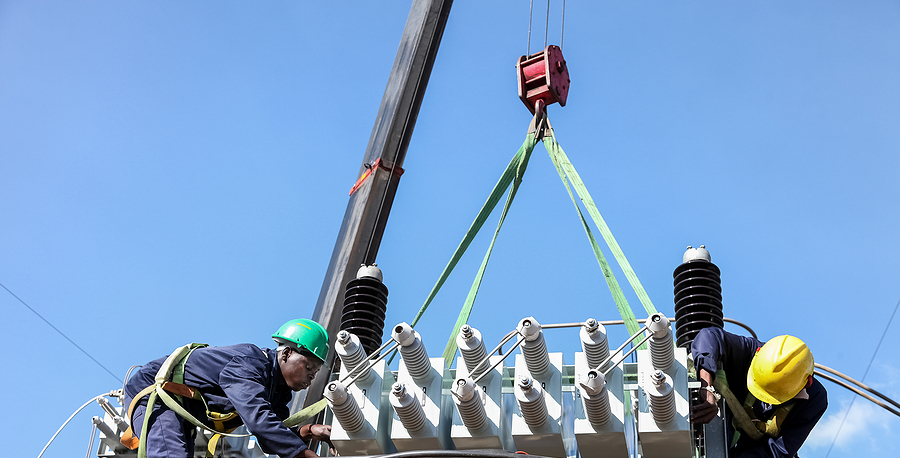Proximo Weekly: Signs of life in African T&D
Despite being one of the most essential components of energy value chains, investment in transmission and distribution (T&D) in Africa has been all but moribund. However, recent milestones – notably the continent’s first independent power transmission project in a decade and the consolidation of the West African Power Pool – look to be changing the sub-sector’s fortunes.

The energy sector’s value chain is quite simple: electrons go one way and cash goes the other – when one flow gets disrupted, so does the other, hence the critical importance of transmission and distribution (T&D ).
In Sub-Saharan Africa that T&D flow is largely broken. The existing system of power lines loses $5 billion worth of power every year, according to a report from the Ghana Institute of Management and Public Administration. In Sierra Leone alone the transmission sector faces losses of around 40-50%, with theft comprising over half of that amount (22%).
There are a web of issues that plague investment in the sector. Firstly, transmission usually lies in the public sector’s domain which makes it vulnerable to the influences of domestic politics. Unfortunately, T&D projects do not get the same press as major energy generation projects meaning there is little political incentive for investing in new lines.
African utilities also sit at the tail-end of forex shocks. While they receive 100% of their revenue in local currency, they have to pay up to 70-80% of their costs in foreign currency. This imbalance leaves utilities severely vulnerable to external shocks and almost systematically unable to cover their costs – especially when you factor in the % of losses during collection which can be as much as $0.40 per dollar of electricity usage. Despite the severity of the issue, Fiji Electricity Authority remains the only country in Asian and African emerging markets to implement a forex risk strategy.
Another problem is that regulations usually do not allow for the private sector to manage utilities. This is a big barrier to incentivising private investment. However, cash-strapped utilities are unlikely to be able to take on the loans necessary to build out the essential infrastructure alone, even if there was political incentive to do so.
Many commentators focus the blame for the sector's lack of bankability on unaffordable tariff rates but one source familiar with the topic argues that this is both a futile exercise, as politically it is often an unwinnable discussion, and misses the point – sector performance and internal cash flow won’t be improved by increasing tariffs in the first stage.
Despite these concerns, the continent has seen Cote D’Ivoire raise rates by 10-15% and South Africa’s Eskom raised them by 18.49% this month. It seems unlikely that Eskom’s price hike will incentivise investment, as the heavily indebted utility is already facing pressure to improve its energy availability to above 65%: in 2022, it implemented power cuts for more than 200 days with record power cuts of 6-8 hours per day for most households.
Recent projects spell out a more promising solution for incentivising better investment in T&D. One of these is the MDB-backed Cote d'Ivoire, Liberia, Sierra Leone and Guinea (CLSG) Electricity Networks Interconnection Project. The 1,357-km-long double circuit high voltage (225 kV) line is set to connect the national networks of the four countries, with completion planned for December 2023. The $508 million project is being financed by EIB ($84 million), AfDB ($122 million), the World Bank ($239 million) and KfW ($42 million), alongside government equity.
The project’s SPV, Transco CLSG, is owned equally by the national utilities of the four countries, created via international treaty in March 2012 to finance, construct, own and operate the interconnector. Upon completion, it will constitute the first interconnection of power systems ever among these four countries – an impressive achievement given that civil and political unrest was rife in three of these four countries until only a few years ago.
Cross-border projects are a significant win for diversifying risk for not just T&D projects, but also existing and future generation projects. Take the Bumbuna Hydro II plant in Sierra Leone. The existing, government owned, 50MW hydropower facility was commissioned in 2009 but supply currently is not available in the dry season and existing customers rely on expensive diesel generators for power. Bumbuna Hydro II, signed in 2020, plans to provide a further 145MW of capacity but the additional $750 million from AfDB, PIDG, EAIF and the European Commission isn’t going to have much effect on its own. The dry season means no water – without better storage and distribution, the project will just provide excess electricity during the wet season, potentially leading to worse loadshedding. The demand for Bumbuna Hydro II also poses a serious risk, as the additional 145MW is unlikely to achieve 100% offtake in Sierra Leone alone where only 27% of the population has access to electricity (and this figure drops to just 5% for the rural population).
The CLSG line ensures the offtake can be exported to neighbouring countries, massively mitigating both the demand risk and the loadshedding risk in the wet season. On top of the main project, a rural electrification sub-component project will also increase the electrification of rural communities living in the vicinity of the 225kV interconnector line, co-financed by AfDB and the EU-Africa Infrastructure Trust Fund. According to AfDB, 54 localities have already been electrified in Cote d’Ivoire; 18-32 localities will be electrified in Guinea; 18-28 localities in Liberia; and 26 localities in Sierra Leone.
Getting the private sector involved
Historically, the private sector has favoured energy generation projects, primarily via IPP business models. According to the World Bank’s Private Participation in Infrastructure database, sub-Saharan Africa’s transmission sector has only seen 0.021% of private sector participating investments in the last decade.
However, two landmark private projects currently in development look set to upset this tradition. Africa Infrastructure Investment Management (AIIM) has recently begun talks for a 180 km cross-border transmission line that would stretch across Zambia and the Democratic Republic of Congo. The project is due to be developed by N Power and receive financial and non-financial support from IFC, with financial close expected next year. A source close to the project confirmed that IFC’s involvement would mitigate some of the political risk and complexities present when dealing with two separate governments and two separate sets of regulations.
But the government of Kenya has moved even faster, signing a deal in January 2022 with India’s state-owned Power Grid and Africa50 to launch the first independent power transmission (IPT) project in Africa. The IPT contract entails the development, financing, construction, and operation of the 400kV Lessos-Loosuk and the 220kV Kisumu-Musaga transmission lines as a counterparty to Kenya’s Ketraco. The project is the first privately funded transmission line to close in a decade and sets a precedent for potential future private projects that can work alongside utility ownership regulations.
These two projects signify recognition from the private sector that generation is not the biggest issue anymore and that funding T&D is not an impossible task. Interestingly, there has been significant funding for mini grids and off grids which appear to have appealed more to private companies – potentially because they avoid the complexity of working with government utilities. However, a source familiar with the sector admitted their scepticism for mini grids, arguing that the model hasn’t been proven profitable yet. Still, a plethora of mini grid projects are announced weekly and all three types of T&D structure seem to have their own purpose. Off-grids certainly make sense for rural areas that are not densely populated enough to attract large-scale interconnector lines; hybrid mini-grids make sense for simultaneously connecting towns to the grid and unlocking solar or hydro generation sources.
The Proximo perspective
It is a good sign when pathfinder projects immediately make neighbouring projects bankable – such as in the case of the CSLG line and Bumbuna Hydro II. As Africa continues to embrace innovative solutions to development and the right solutions are tacked onto the right issues – whether that be interconnector lines, mini-grids or off-grids – the prospect arises that African T&D may yet begin deliver a bankable pipeline of projects, albeit with DFI support.
Selected news articles from Proximo last week
NORTH AMERICA
Itochu launches $2bn fund to invest in North American renewables
Itochu has launched Overland Capital Partners, a fund that will invest up to $2 billion in renewable energy generation assets in North America.
EUROPE
EIB provides €575m for Repsol's renewables projects
The EIB has approved a €575 million ($636 million) loan to support Repsol’s rollout of wind and solar PV plants in Spain with a total capacity of 1.1GW.T
ASIA-PACIFIC
Preferred proponent named for Geelong Convention Centre
The Plenary Conventions consortium has been named preferred proponent for the Geelong Convention and Exhibition Centre precinct development.
MIDDLE EAST & AFRICA
UTM Offshore signs FLNG deal with NNPC
UTM Offshore and Nigerian National Petroleum have signed a heads of terms under which NNPC will take a stake in UTM’s FLNG producer and supply feed gas to the unit.
SOUTH AMERICA
Peru to award Peru/Ecuador transmission project on July 31
Peru’s Private Investment Promotion Agency (PROINVERSION) expects the Piura Nueva – Frontera Substation 500 kV Transmission Line project to be awarded on July 31.
The Proximo Intelligence subscription
Join our community of project finance professionals to get unrivalled access to unique analysis, market data and a global portfolio of expert industry events in the energy and infrastructure space. Click here to find out more





